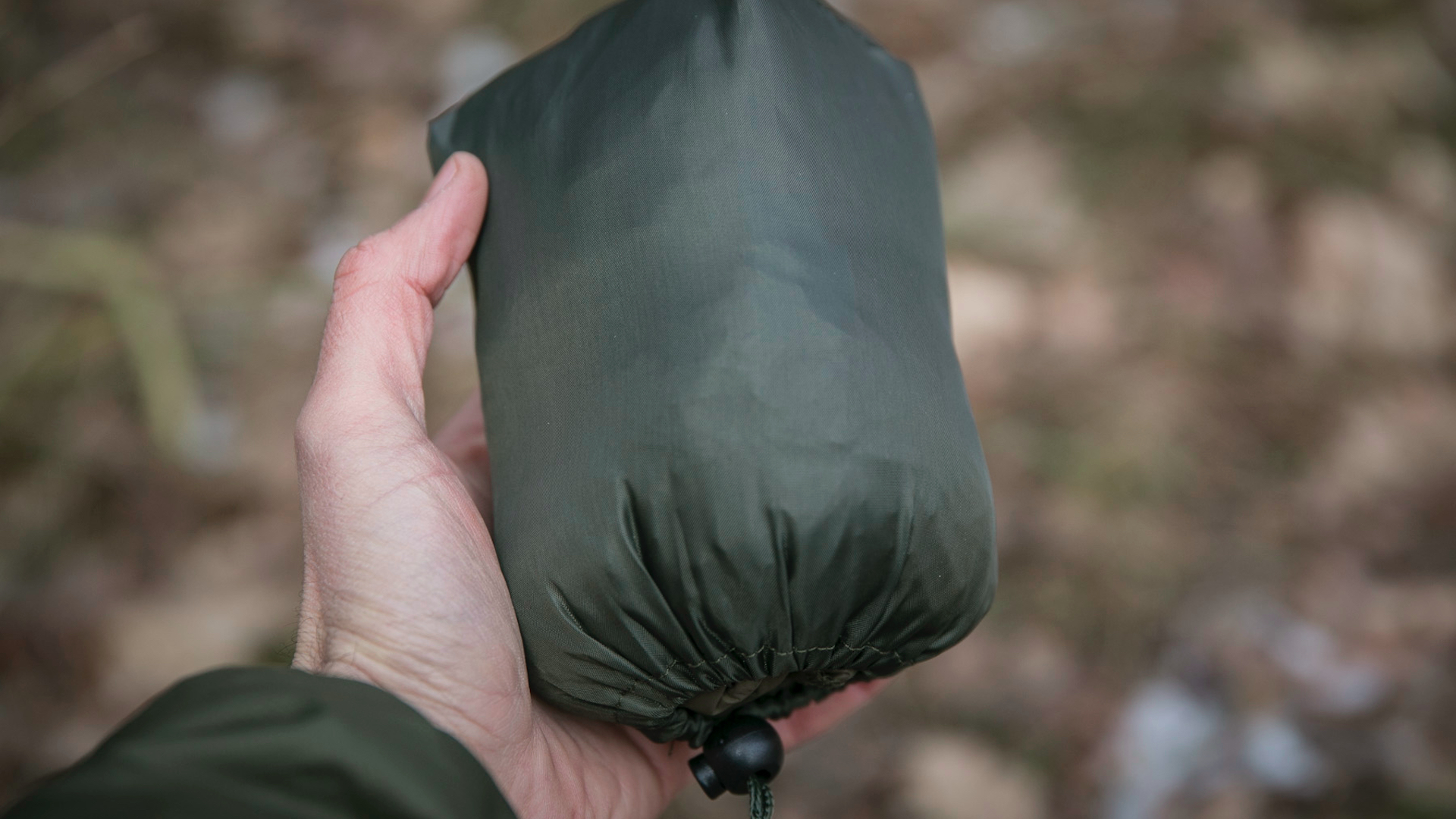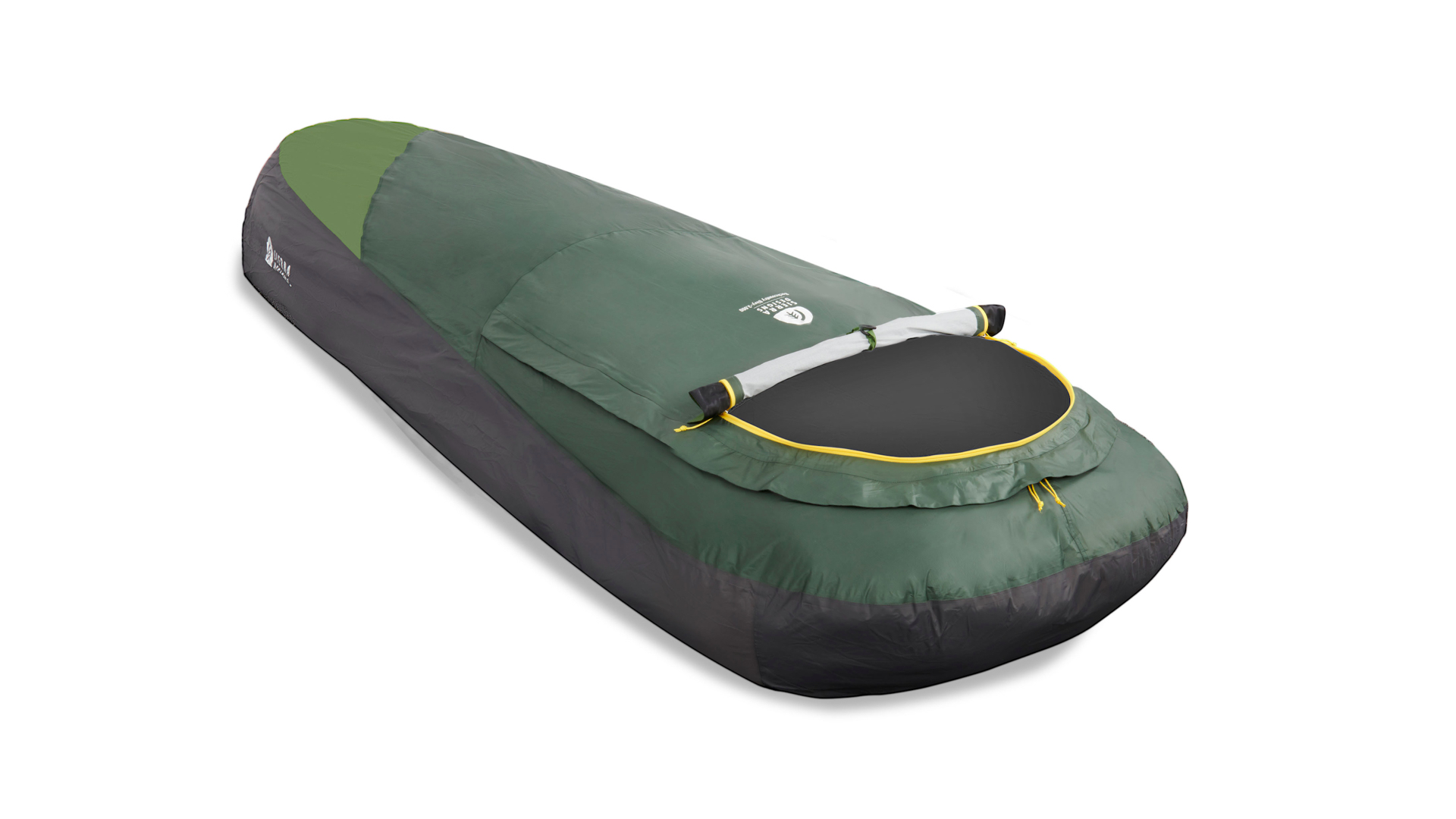Advnture Verdict
Military styling in a sack that’s ideal for minimal-impact sleepers, discreet wild campers and wildlife trackers.
Pros
- +
Light and compact
- +
Comes in standard and extra long
- +
Center-line zip entry
Cons
- -
Hood’s drawstring is fiddly
You can trust Advnture
Snugpak Special Forces: first impressions

The The Snugpak Special Forces bivy sack is ultralight minimalism in neat package. The military have been using bivy sacks for decades, and service-style practical designs have plenty of advantages for the lightweight camper. Snugpak’s Special Forces sack makes full use of those virtues.
• RRP: $179 (US) / £85.00 (UK)
• Weight: 340g / 12oz
• Length: 230cm / 91in
• Width (shoulder & foot): 88cm & 65cm / 35in & 26in
• Materials: Paratex Dry
• Mouth Closure: Drawstring hood
• Features: Center-line quick-open zip, separate stuff sack
• Colors: Black / Olive / Coyote Tan
The half-length, non-locking zip makes getting in and out of the sack quick and easy, while its rustle-free Paratex Dry fabric, in blend-in colors, makes disappearing into the undergrowth easier for stealth sleepers.
Lightweight and compact, this is a sack for experienced minimalist campers whose hardcore bivying skills can upgrade its basic specifications to cope with more demanding conditions.
Bivy sacks in general can work well as weather-proof hides for wildlife watching, but the Special Forces bivy sack’s muted colors and soft non-rustling Paratex fabric make it absolutely ideal for this aspect of bushcraft. (Amazingly, even Snugpak’s Paratex sleeping bag liner can double up as a bivy sack if you’re tempted to go even more minimalist.)
Snugpak Special Forces: on the trails

The Snugpak Special Forces is one of the most compact and lightest bivy sacks I’ve tested, and that’s despite the weight of the half-length zip. The fabric is light, and the emphasis is on waterproofing more than breathability, while the dimensions are adequate rather than generous. But for the minimalist lightweight hiker this is a solid piece of kit.
It’s light enough to take on almost any trip, including as a backup emergency shelter for day hikes. For anyone with good bushcraft skills the sack can cope with most weather conditions.

For military users the burst-out zip allows for immediate action. As a more pacific user myself, I like that it allows me to get my sleeping bag and myself into shelter quickly, and to leave the bag half open if it the weather is warm and dry.
All the latest inspiration, tips and guides to help you plan your next Advnture!
The half-length zip also means that the sack can be used as a quick-to-set-up, sit-up hide for wildlife watching.
After a wild childhood in west Cork, Jasper Winn began embarking on long cycles, walks, horse journeys and kayak trips across five continents – adventures he’s decanted into books, magazine articles, radio and television documentaries. Keen on low-tech but good gear, Jasper is an advocate of slow adventures by paddle, pedal, saddle, boot and sail. He has circumnavigated Ireland by kayak and cycled across the Sahara. Twice. Having ridden north-to-south across Algeria he discovered the only way to get back was to turn round and pedal north again.


